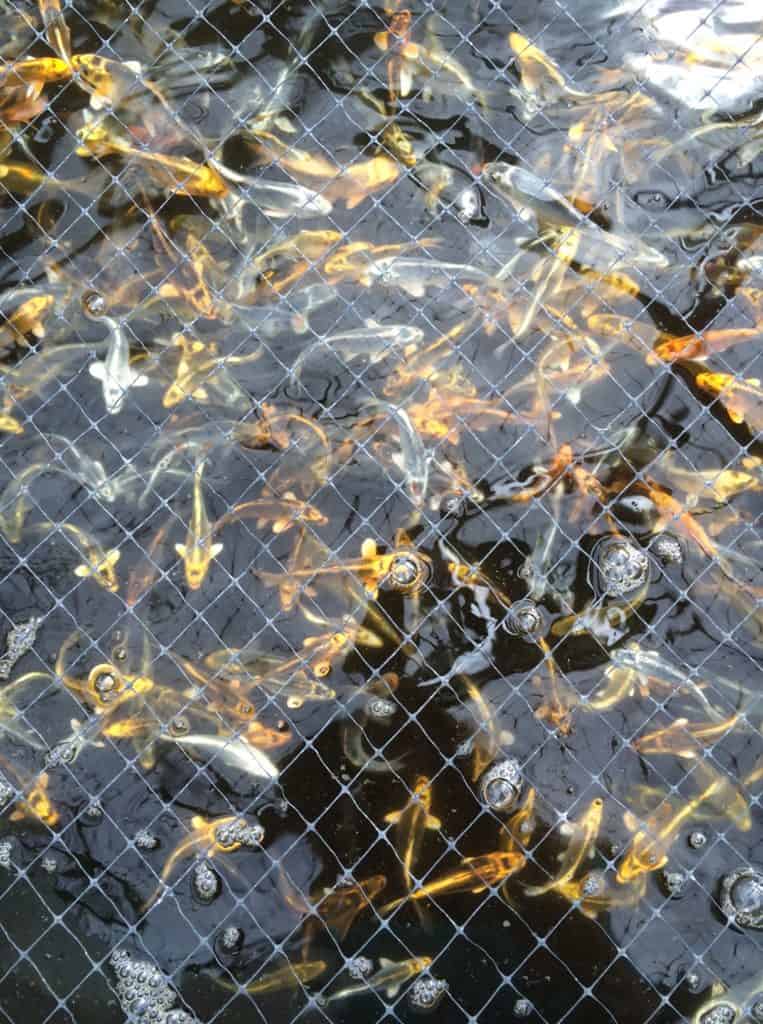Springtime often correlates with new fish arriving from overseas and ending up in new ponds. We have had a few years with an increase in Koi Herpesvirus (Cyprinid herpesvirus-3) cases and it is important to have your new fish tested BEFORE they enter your pond. There are two types of testing available. All fish can be tested at the dealer prior to arriving at your pond. If your dealer does not offer this, find another dealer.
Koi Herpes Virus (KHV) ELISA
This test is used to detect koi carrying KHV antibodies. Since herpesvirus can have a latent carrier stage, the ELISA test will pick out these fish. Carriers of the disease have the potential to spread the disease to the rest of the fish in the pond. It is unknown what exactly causes a fish to start shedding the virus, but stress and concurrent disease are significant risk factors.
This is a non-lethal test that requires a veterinarian to take a blood sample and process it for the lab. It cannot be submitted by a dealer without a veterinarian.
Koi Herpesvirus (KHV) PCR
The PCR (polymerase chain reaction) test is used to detect KHV DNA. It specifically tests for fish actively replicating the virus. This test is used to find active infections, preclinical infections and recent carriers. This test can be performed on both live and recently dead fish.
Some koi dealers insist that only PCR testing is required for a confirmatory test. This is false and used to save money. In order to know if a population is a concern, both the Koi herpesvirus ELISA and PCR tests are required. Our service sends the population numbers to the UC-Davis aquatic veterinarian to determine how many fish in a population require testing. Their required testing numbers are calculated in order to mitigate the risk of not testing sick fish. By testing X number of fish in Y population, we can have better certainly of the overall health of that tank of fish. We let a board certified microbiologist make that call.
Any fish requiring testing MUST be isolated in quarantine tanks for at least 3 weeks at viral replication temperatures (60-77F). Tanks have to separate fish by vendor in order to know which farm any potential outbreaks may have come from. Tanks should be protected from splashing from neighboring tanks since Koi herpesvirus can be spread through infected water. All equipment used for quarantine tanks should be separate for each system. Repeat equipment can be used provided it is properly cleaned. (And a “glug” of bleach doesn’t count!) All dealers should be willing to show you their quarantine setup and explain how it operates. You should not be allowed to walk through, to lessen the biosecurity threat, but a glance through the doorway is usually sufficient.
How to Test
Your dealer should show proof of both ELISA and PCR testing prior to selling you any fish. Refusing to show one type of testing should be considered suspicious. Any dealer can schedule a veterinarian to come out and sample their fish for both ELISA and PCR testing – it is not a complicated process, it just takes some time. If you want a specific fish tested, ask your dealer. If the dealer refuses testing, find another dealer. If the dealers are not held responsible, you as a purchaser must protect your fish.
Sampling is a simple process that can be performed on any live fish. ELISA samples are taken by a blood draw and PCR samples are a simple gill clip. All samples must be submitted to a qualified lab by a qualified veterinarian. It is illegal for a dealer to submit samples under a veterinarian without a veterinarian actually taking the samples. Our service keeps picture record of every fish our service has tested for KHV with their assigned sample number. If a dealer claims our service has tested that particular fish, our service is happy to verify prior to purchase.
Koi herpesvirus is a dangerous disease that many dealers take too lightly. Many cases go unreported with dealers replacing severe losses in order to protect their reputation. By implementing these testing standards, we can prevent the spread of Koi herpesvirus in the US. By acting as a responsible consumer, you will protect your current fish investment. “Reputable” dealers cannot guarantee healthy fish, unless they have the paperwork to prove it!
At this time, Aquatic Veterinary Service cannot recommend any one dealer that is safer than the other. You, as the consumer, must do your research and get testing done prior to purchase in order to know if your fish are safe.


I need to know how to do, or how do get a khv test kit for my koi, I’ve had many deaths with really bad gills, no chlorine or chloramine in the water, no parasites after scraps, water parameters all how they should be, but still sores, infections and bad gills killing my koi, I’ve spent £100’s treating and trying to resolve but to no improvement ; ( just dead ; ( I’m so near breaking point and giving this up, I feel that khv is the only other reason ??? Please could you guide me or help me out at all please 🙏 regards Jonathan
If you are concerned about your fish, please call (831) 278-1081 for veterinary assistance. If you are outside California and Nevada, please visit https://fishvets.org or https://wavma.org